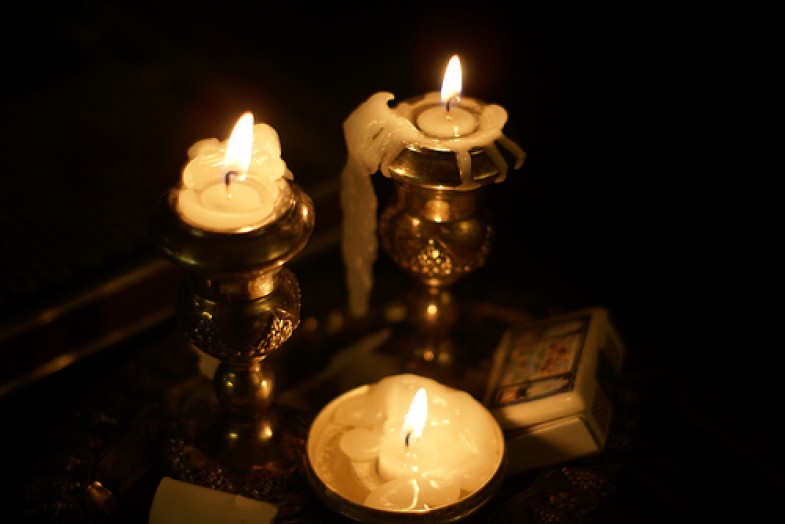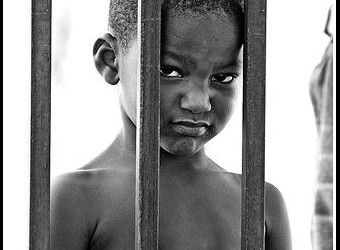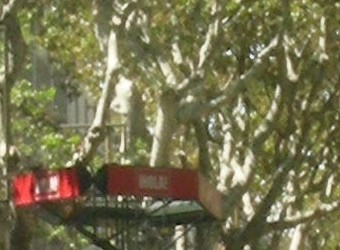Life began in a bountiful “commons”, or so the Bible tells us.
In Eden, animals, vegetation, water, soil, humans were all part of the web of life. They all took from, gave to and were part of the riches of the earth. Each occupied its niche, regarding, engaging and complementing the other. The earth was a whole. Having been fashioned by a force beyond them all, it could not by right be claimed by any less than all.
Together, and side by side, they built their homes, foraged their food, rested, romped and thrived in nature’s glory. Expansiveness of spirit, sharing but recognizing boundaries, allowed all to flourish.
This is the dream of humanity, the foundation, at least, of western stories: that it is natural, right and good to share in the commons. But this bright vision also shows how hard it is. It shows that the commons is a fragile place, made not out of accident but intentionality. It requires compliance with norms in order to flourish. It is not a place where anything goes. It requires restraint. And in some cases, even the slightest deviation, excess or violation can cause it to collapse. Thus, the story of the apple.
The apple (in this reading) represents human over-reaching. It represents both the individual human passions of possessiveness, curiosity, delight and adventurousness that drives progress forward as well as our greed and selfishness that tempts us to reach and take beyond our fair share. It is a conundrum. Civilization would stall if humans were not curious or did not press on to feed their ambition. Yet humanity will perish if unbounded desires for possession wealth and consumption were pursued.
So the story that helps form the foundation of western belief teaches us about the complexity of the commons: its tensions, blessings, temptations, celebration, limits and price of failure.
Judaism puzzles over this dilemma of the commons, how to balance sharing and ownership, progress and stability, and answers the question in four ever-expanding concentric circles. They are the migrash (greenbelt around a city), Shabbat eruv (the Sabbath commons), the shemittah (sabbatical) year and the Yovel (Jubilee). These are increasing levels of the commons both in terms of space and time.
The first circle: On a daily basis, the biblical laws required that every city assign a ring of open meadow on the settlement’s outskirts. Although specifically designed for the tribe of Levi (whose inheritance in biblical Israel was the privilege of serving the Temple while other tribes received their own states), it was nonetheless available to all. The migrash literally belonged to the people and everyone had access to it. It was in trust to the people as a piece of their national heritage. And as shared space in the midst of the tugs and tumbles of the work-a-day world, it was a constant reminder of the commons of Eden.
The second circle: If the migrash was a balm against the rough and tumble of commerce and private ownership of everyday life, there was an even greater balm once a week. For on Shabbat, the Sabbath day, all land became public, belonging to no one in particular and everyone in general. A new set of rules operated on the Sabbath day. The rabbis responded to this novelty by creating the concept of an eruv, a legal boundary that carved out a specific shared space in which everyone within had equal rights of access and use. No commerce, no extended travel, no transportation other than feet. Boundaries, though still physically present, became inconsequential, or at least, porous. Shabbat transformed place and neighborhoods into a bit of Eden reborn every seven days.
The third circle: Every seven years, that reclaiming of the commons expands yet again when the Jewish calendar celebrates the shemittah, the sabbatical year. This is not just a day but an entire year in which private property boundaries are set aside. Land (specifically farm land, and most land owned in the Bible was considered farm land) reverts to the commons. All fences and other access barriers were to be removed. Land once again belonged to everyone. Eden, for a year, had returned. No one was to work the land. The produce that grew of itself was available to all. Everyone could come and take – but only what they needed for the day. The crops of the earth were to be harvested like manna from heaven – just enough for the day. More than that was unacceptable, unfit for consumption, not kosher. Excess in private possession, shemittah teaches us, rots.
For one entire year, this edenic sense of commons ruled. But even the Bible knew this was pushing the bounds of the commons. So in the eighth year, ownership, fences and the boundaries of mine vs. yours return.
The fourth circle: There was one more round of the commons, though, an exaggerated, penetrating, encompassing, radical reboot of all economy, land-ownership and social justice, a grand grasp for reclaiming a bit of Eden in our time. At the end of seven cycles of seven years, at the culmination of the seventh shemittah year, the grand Jubilee was celebrated. This was a total social reboot. In the shemittah year, the landowner only temporarily relinquished exclusive claim to his land. In the Jubilee year, he lost it entirely. All land was returned to the tribe, to be redistributed as tribal land in an equitable way to all living members of the tribe.
In this distribution, it was clear that land held by tribal members was not owned by individuals; it was not even owned by the tribe. All land was God’s land. The tribe, and its members, merely had the right of use, its usufruct. But over time, this truth tended to fade. Fifty years is time enough for habit, mounting debts, thousands of sales and purchases, marriages and divorces re-arranging property, to erase the nuances of usufruct vs ownership. So, the Bible instituted the Jubilee to reclaim and re-assign land so that it would once again be clear that only God owned the land and it was given to people to share as the commons. (While there is evidence that the shemittah year was practiced by some over the centuries, there is no evidence that the Jubilee was ever instituted. Yet it remains in the Bible as an aspiration for all time.)
Four circles in Judaism, anchored in time and place, repeatedly seek to remind us that life is rightly lived as a commons. Yet, the very existence of their partial presence (in time and space) teaches a paradox: precisely because it is hard to live always in the commons, we must find ways to live partially in the commons.
It is hard enough to observe a weekly Sabbath in America – though that is a great start – much less imagine what a shemittah year might look like. And yet that is exactly what a group of us are doing. We are trying to recapture the essence of the shemittah laws – a year-long celebration of environmental, economic and social justice.
Such an effort to transform these biblical laws into contemporary practices reminds us that life is best lived in an intentional balance of private and shared, that benefits and joy can often be had as much (or more) in shared use than in guarded possession, that some things in our daily lives are and must be constructed as a commons.
Reclaiming the commons is not easy. But deepening the conversation of what such a world of sharing would look like is a start. The vision of the Bible can help.







